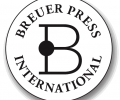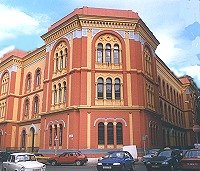The media is widely perceived as sympathetic toward Kadima, but hostile toward the Likud and Shas, according to a new poll conducted by the Chaim Herzog Institute for Communications, Society and Politics. The poll found that more than half the public believes that media coverage of Kadima has been supportive in the run-up to the elections, while only 10.8 percent view the media as hostile toward the party. In contrast, some 48 percent of respondents said that the media was hostile toward the Likud, while 52.6 percent said that it was hostile toward Shas.
With regard to Labor, however, the public was split: Some 32 percent said that the media was sympathetic toward Labor, while 22 percent said that it was hostile. Not surprisingly, the survey also found that supporters of any given party were more likely than the general public to view the media as hostile toward that party. The survey also revealed that 62 percent of the public is unhappy with the media’s coverage of the campaign, similar to the percentage that expressed dissatisfwith coverage of the 2003 campaign. In particular, the survey found, 31.7 percent of respondents said that they would like to receive information about the parties’ and candidates’ plans and positions, while only 9.6 percent felt that the media was actually providing such information. In contrast, only 16 percent of respondents said that they were interested in polls indicating how many seats each party was likely to win, yet 38.4 percent said that such polls seemed to be the media’s main interest. Another 24 percent thought that the media has focused primarily on the candidates’ personalities, while only 16 percent said that this issue was of interest to them. Despite their unhappiness with the campaign coverage, however, 44.4 percent of respondents said that they were following it, while only 15.4 percent said that they were completely ignoring it. Tuesday night, meanwhile, a new element will enter the media’s campaign coverage, with the onset of television and radio spots prepared by the parties themselves. These spots will be aired daily until the day before the elections. On weekdays, the television clips will air at 8 P.M. on Channel 1, 7 P.M. on Channel 2 and 11 P.M. on Channel 10. On Saturday nights, the slots will be at 7:30 P.M., 11:15 P.M. and 7 P.M. respectively. The start of the campaign broadcasts officially inaugurates the final phase of the campaign, and though it is common to scoff at the spots’ ability to significantly influence voters, all the parties nevertheless invest enormous resources in them. The major parties often produce new spots during the campaign to respond to the clips aired by their rivals on previous nights. This year, precisely because the campaign has thus far been uneventful, many parties are hopeful that the broadcasts will have more impact than usual. Both Kadima and Likud officials said that the polls their parties had commissioned revealed an enormous thirst for information among the public. Since the amount of air time each party receives depends on how many seats it has in the outgoing Knesset, Likud will have the most 97 minutes of television spots and 199 minutes of radio broadcasts. Likud is therefore particularly hopeful that the campaign broadcasts will boost support for the party. Parties with no seats in the outgoing Knesset are entitled to 10 minutes of television time and 25 minutes of radio time. Every party represented in the outgoing Knesset will show a television clip Tuesday night, though this will not be the case on subsequent nights. Tuesday night’s broadcast will open with Labor and close with Likud, while tomorrow’s will open with Kadima and end with Shas. The chair of the Central Elections Committee, Supreme Court Justice Dorit Beinisch, will review all the spots a few hours before they air to ensure that they comply with the law. She is authorized to pull any clip she deems to be in violation of the law.
BPI-info
BPI-info














